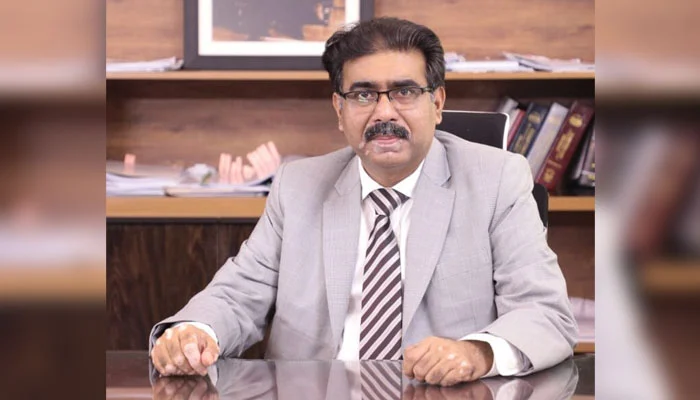Miss Habiba
In the dynamic realm of firefighting, an innovative approach is taking center stage – California’s firefighters are harnessing the power of artificial intelligence to detect wildfires swiftly and strategically. This cutting-edge initiative involves an intricate dance of more than 1,000 strategically placed cameras, feeding real-time visuals into an AI-powered machine. The result? A seamless alert system that signals the momentous call for first responders to take action.
Let’s paint a vivid picture of ALERTCalifornia, the AI program that’s shifting the firefighting paradigm. Just a month since its launch, the program showcased its prowess. In the cloak of night, amidst the remote Cleveland National Forest, a spark ignited around 3 a.m. local time, over 50 miles away from San Diego. The potential catastrophe loomed, veiled in darkness and slumbering residents. But the AI, vigilant and unyielding, spotted the danger. A fire captain was swiftly notified, rallying around 60 firefighters and a fleet of specialized equipment – seven engines, two bulldozers, two water tankers, and two hand crews. Remarkably, within a mere 45 minutes, the wildfire was tamed and subdued, as confirmed by Cal Fire.
The brains behind this remarkable feat hail from the University of California San Diego’s engineering team, who have seamlessly integrated AI technology from DigitalPath, a Chico-based company. This intricate network relies on the watchful gaze of 1,038 cameras scattered throughout the state, strategically positioned by various public agencies and power utilities. Each camera boasts the remarkable capability to swivel a complete 360 degrees, directed remotely by vigilant operators.
Since its inception on July 10, ALERTCalifornia has shown glimmers of its potential. Cal Fire shared instances where AI not only pre-empted a 911 call by alerting fire captains to brewing blazes but also triumphantly quelled fires before they could wreak havoc. However, in the face of innovation, it’s essential to tread cautiously. Neal Driscoll, the principal investigator of ALERTCalifornia and a distinguished professor of geology and geophysics at UCSD, asserts that the current sample size isn’t substantial enough to draw sweeping conclusions.
Don’t forget to Subscribe our channel & Press Bell Icon.
Yet, the significance of this venture looms large. Cal Fire envisions a future where this technological marvel sets a global precedent. The need is undeniable, underscored by the devastation that wildfires have unleashed across regions – Hawaii, Canada, and the Mediterranean. The California model, born from AI ingenuity, might just be the beacon that guides other states and countries in their quest to combat these fiery foes.
In a world grappling with ever more intense and frequent infernos, a groundbreaking solution has emerged – a trailblazing innovation that knows no borders. “It’s universally relevant, applicable anywhere across the globe. This holds particularly true as we witness more colossal and recurrent fire outbreaks exacerbated by climate shifts,” remarked Suzann Leininger, an astute intelligence specialist at Cal Fire stationed in El Cajon, just a stone’s throw from San Diego.

Check out our monthly English and Urdu magazines on Homepage
Within Leininger’s realm lies the task of honing the machine’s intellect. She delves into a treasure trove of previously recorded camera footage, a mosaic of instances that the AI deems fire-related. Her verdict – a crisp yes or no – guides the machine’s learning curve. The realm of false positives is a labyrinth of diverse triggers: be it clouds, billowing dust, or even a vehicle wreathing the air with smoky tendrils.
Embarking on this expedition of refinement, a cadre of specialists has swept across the state, running this exercise in tandem. Within a mere span of weeks, the AI’s acumen has sharpened appreciably, asserts Driscoll.
Yet, the journey of this AI marvel transcends the camera network. It weaves an intricate tapestry of multifarious data, including a skyward survey to quantify the foliage that would stoke forthcoming fires, even peering beneath the green canopy to map the very contours of Earth’s surface.
The contributions of airplanes and drones are not to be understated; their collection of infrared and diverse wavelength data, imperceptible to human vision, paints an even richer portrait.
Even the winter months don’t impede this trailblazing effort. Behold the platform’s ability to gauge atmospheric rivers and snowpack. The UCSD team diligently captures the narrative of burn scars, unraveling their ripple effect on erosion, sediment distribution, water purity, and soil health.
This trove of information, open for perusal by private enterprises and inquisitive academic minds alike, might yet pave the way for modeling fire dynamics and ushering in unimagined AI applications, all in the service of comprehending our environment.
In an era dominated by extreme climatic swings, Driscoll’s assertion rings clear: “We equip them with data, for this conundrum transcends individual endeavors. Our mission is to nudge the needle, leveraging technology to its fullest, even if it’s a modest push.”
To conclude, the fusion of cutting-edge technology and human expertise in battling escalating fire hazards emerges as a pivotal step toward safeguarding our communities and ecosystems. As flames grow fiercer and climate uncertainties persist, this innovative approach symbolizes our collective commitment to confronting crises head-on, arming ourselves with knowledge, and nurturing a safer and more resilient future.
Subscribe our website for latest updates:
https://republicpolicy.com/shop/
Read More

















